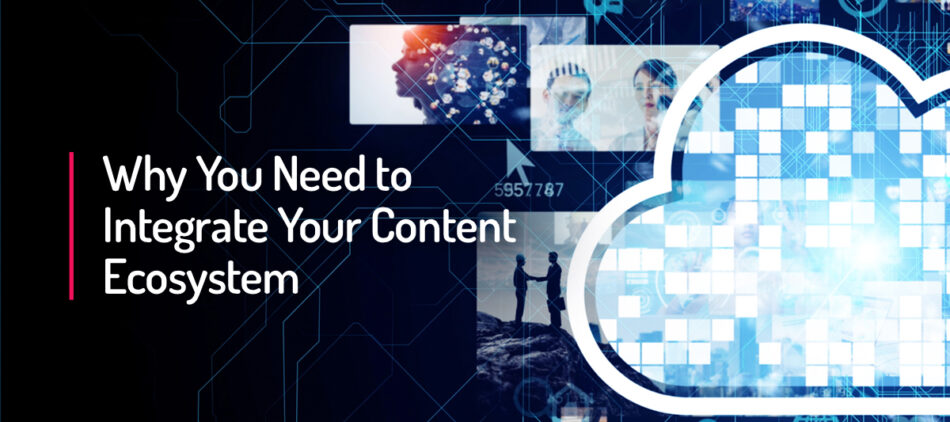
Why You Need to Integrate Your Content Ecosystem
Upgrading your legacy systems can help you connect your content ecosystem, and accelerate content production and monetization
Summary:
- Media companies have accelerated their digital transformation efforts as a result of the pandemic, adopting cloud solutions for their content production needs
- This has created a serious integration problem between all the different tools used to create content, slowing time to market
- Adopting a media asset management platform with API capability makes content production more efficient and creates the necessary infrastructure to increase revenue
In a previous blog, we talked about how the pandemic exacerbated the need for media companies to become better equipped to handle remote content collaboration. Deploying a single solution to consolidate your content efforts helps alleviate some of the fiction.
However, using a variety of software solutions and tools in your content efforts can cause a disconnect in your workflow. To meet the demand of consumers by accelerating content production and ultimately open the door to increasing monetization opportunities, you need to evolve digitally without operating in application silos.
How legacy systems and data bifurcation hurt content production
The pandemic forced digital transformation efforts to accelerate, especially with how companies create, collaborate, share, and distribute their content. One of the biggest challenges to digitizing content production is being able to integrate legacy systems with any new technology you add to the content ecosystem.
The problem is that many of the SaaS solutions that streamline content production do not work with legacy systems. To overcome this, there are two options: either write custom code to integrate them, which is costly and only acts as a temporary band-aid; or, start looking to replace legacy systems with modern solutions that have API capability to enable future integrations. Naturally, the latter is disruptive in the short term, but it’s an inevitability that all content producers will have to face.
The shift in cloud solutions has already begun, with 96% of all enterprises utilizing at least one cloud service in their organization. When you consider that many of these systems aren’t connected to one another, it’s exceedingly difficult for your team to find, catalog, and utilize what’s in your content archive. Content may reside in different places or may appear to no longer exist—and tracking that content down slows production.
When you lack a centralized source of truth around content, it creates a disconnect that also hampers sharing and distribution, holding you back from generating revenue off the media you’ve worked so hard to create.
The future of media asset management
In 2019, streaming services produced more content than the whole television industry did in 2005. While integrations can help make more content accessible to consumers, on the backend where the content production happens, they also help expedite creation. This is just as important when you consider that media consumption is at an all-time high.
Chris Hood, the Head of Business Platform Strategy at Google, wrote a detailed article on the impact of APIs for content producers in expanding reach and driving ROI. He stated that APIs are critical in “seamlessly connecting artists and production crews to the necessary resources and assets across multiple production technology and locations.”
With the continued evolution of technology, you need to easily integrate your systems in order to become frictionless. In doing so, you can make content collaboration more efficient and effective, creating a single destination that your team can use to not only access necessary assets but control who has permission. Only then can you maximize the monetization capability of any media you own or create.
In the next and final installment of this series, we’ll dive deeper into the different methods you can use to generate revenue off of your media.
Learn More About Digital Media Hub
Additional Reading:
What is Media Asset Management (MAM) and How Is It Different?